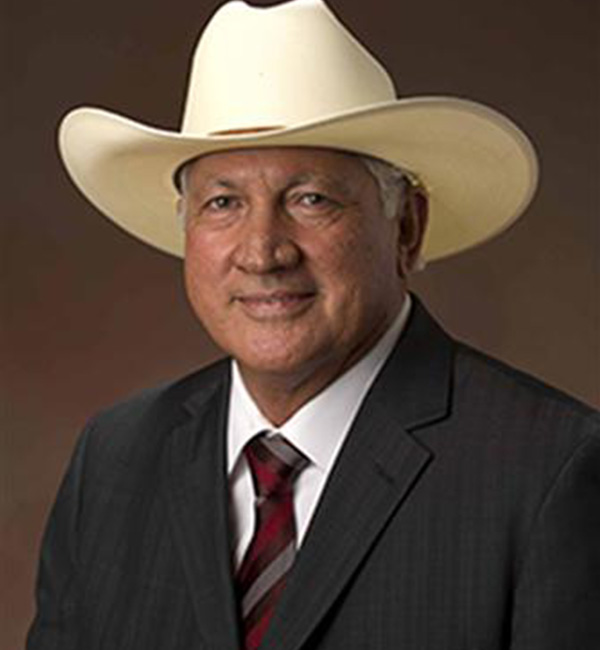Fresno County Farmer Joe Del Bosque has been seeing “a silent spring” in his fields, with more than 25% of his land now fallowed due to deepening drought conditions.
“There's no water, there's no crops, there's no people,” said the CEO of Del Bosque Farms during a special drought hearing at the Legislature last week.
With state and federal water projects slashing deliveries to many irrigation districts, farmers and ranchers across the state are taking emergency measures to prepare for a long, dry year ahead. Lawmakers are asking why more money was not invested in water infrastructure following the last drought, while local water managers look for more immediate actions to reduce further impacts if the drought continues into 2022.
Del Bosque pointed out that about 500,000 acres of farmland were fallowed at the peak of the 2012–2017 drought, with 10% of San Joaquin Valley farmland falling out of production. The total economic loss to agriculture in 2015 alone was $2.7 billion, with 21,000 jobs lost, about 5% of agricultural employment statewide. The drought hit farmworkers and economically disadvantaged communities hardest, said Del Bosque. Cases of valley fever increased by nearly 70%, while West Nile detections hit an all-time high.
“Suicide rates increased dramatically, as did social crimes like domestic abuse and theft,” he said. “Three San Joaquin Valley counties—Kern, Madera, Kings—reported that 12.5% of the surveyed populations had serious psychological illnesses.”
Those counties had the fewest practicing physicians, making them the least prepared for these impacts, he explained.
As California enters a second dry year, the conditions are already similar to the third year of the last drought.
In an event last week for the Public Policy Institute of California (PPIC), Josué Medellín-Azuara, an associate professor at the University of California, Merced, described the conditions along the southeast San Joaquin River as “a little bit better” than along the Sacramento River in Northern California, which provides essential flows into the Sacramento-San Joaquin Delta and water exports to the valley, the Central Coast and to cities in the Bay Area and Southern California.
“The situation of the reservoirs is quite worrisome also in the San Joaquin Valley, but not as bad as it was in 2014,” said Medellín-Azuara.

Joe Del Bosque, CEO of Del Bosque Farms
He said voluntary agreements for Delta flows would put the state in a better position for next year should the drought continue. With local agencies beginning to implement plans for the Sustainable Groundwater Management Act, Medellín-Azuara said the current conditions present a great opportunity to revisit drought provisions in those plans. He urged farmers, however, to be cautious with deficit irrigation in orchards, since those practices have been shown to heavily penalize yields in later years.
Laurel Firestone, a member of the State Water Resources Control Board, expected small and rural communities, particularly in low-income areas, to be hit hardest this year, along with already vulnerable aquatic ecosystems.
“We're already seeing earlier and more widespread harmful algal blooms and water temperature and salinity levels that are exceeding the levels required to protect certain species and maintain a freshwater balance in the Delta,” explained Firestone.
Grant Davis, the general manager of Sonoma Water, manages a portion of the watershed that falls within Gov. Gavin Newsom’s initial drought emergency declaration. Davis said Lake Mendocino is at 40% of capacity, leaving just 36,000 acre-feet of water for the entire season. He said the district would not feel comfortable letting the lake go below 20,000 acre-feet, which would be the lowest level ever in the reservoir.
“A 20% reduction [in allocations] is going to be a very difficult challenge for us, and we're going to do it,” said Davis. “But that means we have to get cooperation from the entire region, all of our contractors.”
The region has a vibrant dairy community with stock ponds that are often used to fight nearby wildfires. Davis said he hopes to map out those ponds and maintain sufficient water levels in them to use for fire protection later this year.
“Linking water and fire is a recipe for resilience that we need to explore further,” he said.
David Rabbitt, who serves on the Sonoma Water board of directors and is a county supervisor, explained at the legislative hearing that water hauling programs are already underway for ranches with ponds that have run dry. Low moisture in the soil has contributed to the loss.
“The moisture content on May 1 was about what it should be on August 1,” said Rabbitt. “Ranchers have been facing tough decisions. They've been culling their herds, they've been selling their herds, transferring their herds, trying to find alternate sources of water.”
He noted a significant decrease in the availability of reclaimed water. Sonoma, Marin and Napa counties have been partnering on a larger watershed approach to recycled water, which helps vineyard managers with frost protection on the grapevines and ranchers with irrigating pasture.
“[Farmers] really have their nose to the grindstone and understand what it takes to survive,” said Rabbitt, adding: “We need immediate drought relief funding to support agriculture in this county.”
He said this could include support for projects to jumpstart groundwater recharge, installing liners for stock ponds and reservoirs and adding wind machines to combat frost and soil moisture probes to manage irrigation needs.
“There's a short-term immediate need to keep the businesses up and going through the summer months,” he said. “Then there's longer-term investments that need to be made to really provide the resiliency needed to survive.”
Frustrated Republican lawmakers pointed to surface water storage as one option for long-term needs that has been underappreciated by state leaders.
“We've been in a drought off and on for the last 20 years,” said Assemblymember Thurston Smith of Apple Valley. “Why have we not used our resources for water storage?”
Smith said the Sites Reservoir Project in Northern California has been discussed as an option for over 50 years but is yet to be constructed.
Asm. Megan Dahle of Lassen County asked what lawmakers could do now to free up water bond money from Proposition 1. Voters passed the measure in 2014, but the funds are not likely to be fully allocated until 2030.
Jeanine Jones, the interstate resources manager for the Department of Water Resources, responded that it’s not just an issue of state funding.
Interested in more coverage and insights? Receive a free month of Agri-Pulse West“In the case of Temperance Flat, the local sponsors were unable to find additional funding sources,” said Jones. “The state investment was only intended to be for a share of the project.”
Rachel Ehlers, the principal fiscal and policy analyst for the nonpartisan Legislative Analyst’s Office, recognized the potential for the American Rescue Plan to fund water infrastructure improvements. Ehlers said this would free up the state from future costs to the general fund, which is driven by tax revenue, and allow bond money to go to state-specific needs.

Laurel Firestone, State Water Board
“We're still waiting for additional guidance from the federal government around specifically what types of projects, including water projects, that funds can be used for,” cautioned Ehlers. “There is certainly overlap when it comes to water infrastructure and capital projects.”
Del Bosque, who served on the California Water Commission under Gov. Arnold Schwarzenegger, said some of the projects the commission approved for Prop. 1 were still underfunded, either from a lack of matching private dollars or because the water bond money fell short of what was needed.
“Projects like Temperance Flat got a very pitiful amount,” he said. “They got like $177 million, and the project costs like $2 billion.”
He urged lawmakers to capitalize on the potential federal investment by combining it with a portion of the state’s budget surplus as well as unspent bond money and climate bond proposals currently being considered in the Legislature, and then directing that to expansions of the San Luis and Los Vaqueros reservoirs while increasing groundwater storage and restoring conveyance capacity at critical canals.
“The solutions are there—they've been studied for years,” he said. “We simply need to have the political will to follow through.”
In the short-term, the state could invest “the maximum amount of funding possible” into shovel-ready projects that can improve water supply within the next 18 months for the farms, communities and ecosystems most impacted. Del Bosque added that the state could streamline the water transfer permits to more quickly move water from sellers to buyers, which the State Water Board has already been prioritizing. This would include “cutting the green tape” by exempting environmental quality reviews.
“It doesn't help me to purchase water from partners if I am only able to receive that water when my plants have already died,” said Del Bosque. “We're planting crops and we only have enough water to get to July. The rest of the water that we need is hung up in a transfer.”
For more news, go to www.Agri-Pulse.com.


